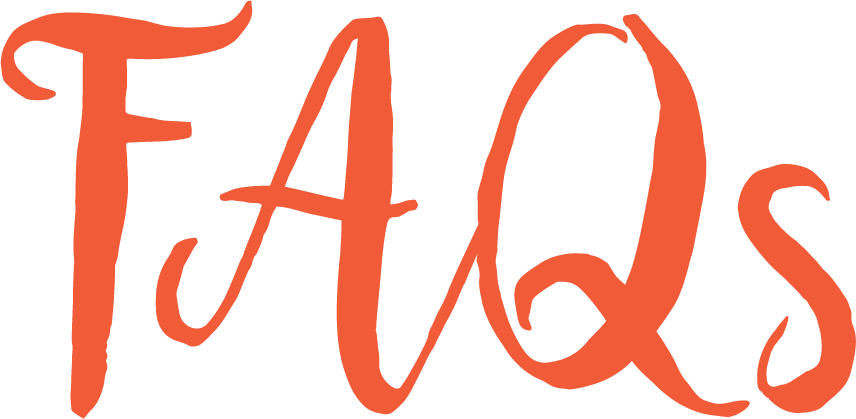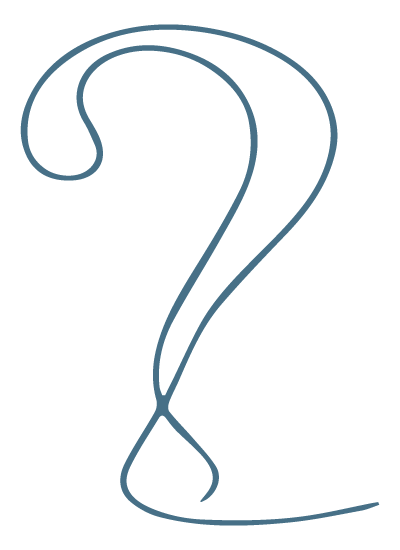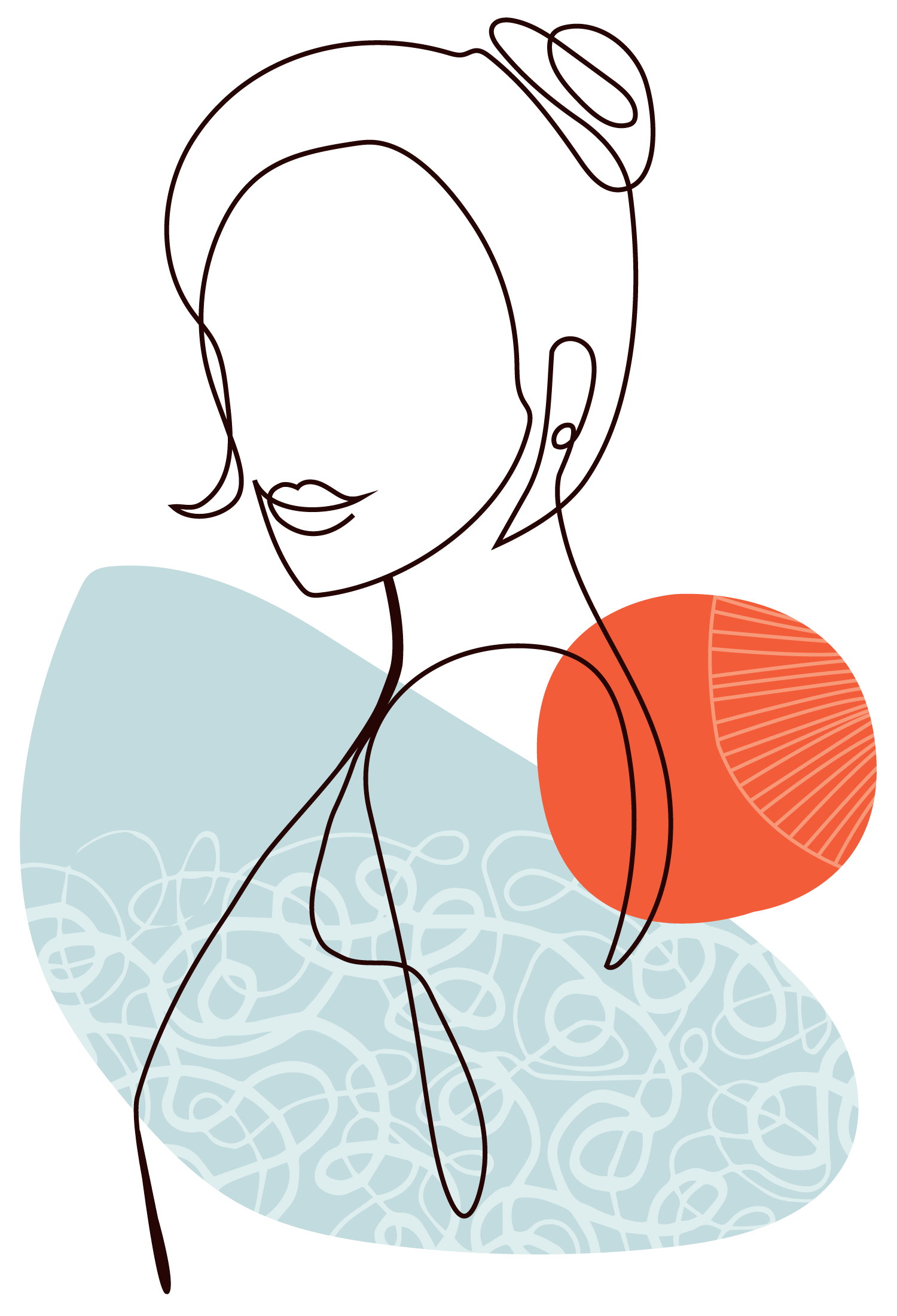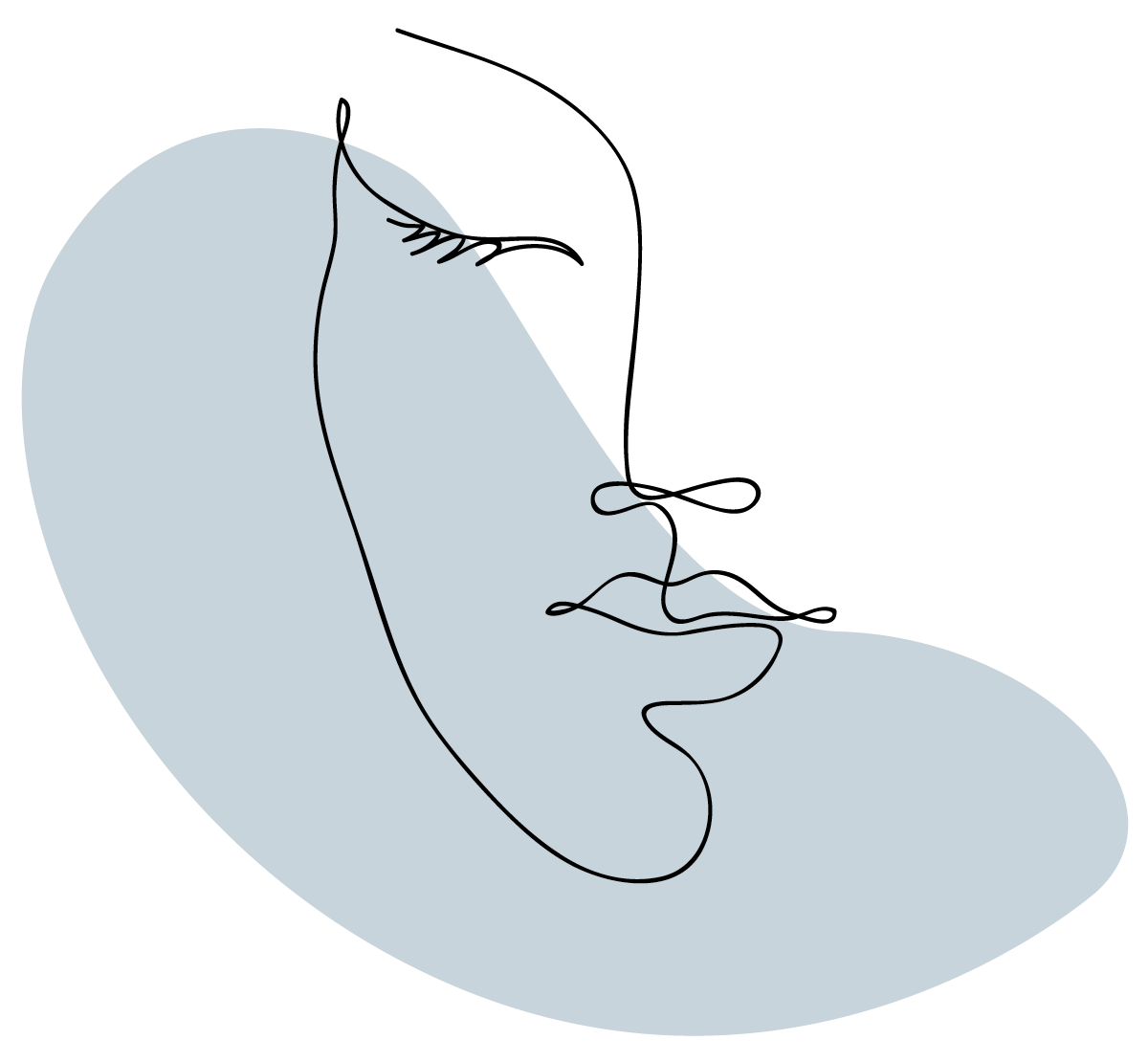
About Hypothyroidism
FAQs—Discover the truth, facts, and honest answers to whatever’s on your mind.

GENERAL HYPOTHYROIDISM QUESTIONS

GENERAL HYPOTHYROIDISM QUESTIONS
Common causes of hypothyroidism include:
- Autoimmune disease (Hashimoto’s disease)
- Full or partial surgical removal of the thyroid gland
- Radiation treatment
- Too much or too little iodine
- Medications (including Lithium)2
Hypothyroidism can affect you in a variety of individualized ways, with common symptoms including:
- Feeling colder
- Fatigue
- Dry skin
- Becoming forgetful and depressed
- Weakening muscles
- Thinning hair
- Heavier or irregular menstrual cycles
- Swelling legs, ankles, and feet
- Weight gain
- Constipation2


FAQs—Discover the truth, facts, and honest answers to whatever’s on your mind.


GENERAL HYPOTHYROIDISM QUESTIONS
- Autoimmune disease (Hashimoto’s disease)
- Full or partial surgical removal of the thyroid gland
- Radiation treatment
- Too much or too little iodine
- Medications (including Lithium)2
- Feeling colder
- Fatigue
- Dry skin
- Becoming forgetful and depressed
- Weakening muscles
- Thinning hair
- Heavier or irregular menstrual cycles
- Swelling legs, ankles, and feet
- Weight gain
- Constipation2

DIAGNOSIS AND TREATMENT QUESTIONS


DIAGNOSIS AND TREATMENT QUESTIONS

DIAGNOSIS AND TREATMENT QUESTIONS
To arrive at a correct diagnosis of hypothyroidism, your healthcare provider may consider information drawn from the following: symptoms; medical and family history; physical exams; blood tests; T3 tests; reverse T3 (RT3) tests; and thyroid antibody tests.2
Managing hypothyroidism requires treatment management and lifestyle changes. You should partner with your healthcare provider to create a treatment plan that’s right for you.4
TSH stands for thyroid-stimulating hormone, which is produced by a small gland in your brain called the pituitary gland.
The pituitary gland sends out TSH, which triggers your thyroid gland to produce two thyroid hormones—thyroxine (T4) and triiodothyronine (T3).
T4 and T3 help regulate many functions throughout your body.
Relating to hypothyroidism, a low level of T4 and high level of TSH indicate that your thyroid is underactive. This is due to your pituitary gland producing more TSH in order to stimulate your thyroid into producing more T4. As your thyroid underproduces T4, there is less T4 available to be converted into T3 for your tissues to use.5
TSH (thyroid-stimulating hormone) test. The most important and sensitive test for diagnosing hypothyroidism measures how much of the thyroid hormone thyroxine (T4) that the thyroid gland is making.
T4 tests. These tests measure the T4 in your blood to help in diagnosing hypothyroidism. Most of the T4 in your blood is attached to a protein—thyroxine-binding globulin—and the “bound” T4 cannot get into body cells. About 1%-2% of T4 in the blood is unattached—or “free”—and can get into cells. Two simple blood tests—the free T4 and the free T4 index—measure the amount of unattached T4 that is in your blood and available to get into cells.
T3 test. This test measures the level of T3, which is made/converted from T4 and used throughout your body. While many healthcare providers consider this test, it is less commonly used in diagnosing hypothyroidism than TSH and T4 tests, as it takes longer to show an abnormality.1
Reverse T3 (RT3) test. This test measures the inactive form of the hormone T3. Under normal conditions, the body changes T4 to T3 and RT3 in specific amounts. However, the amount of T4 converted to RT3 can rise, such as when the body is under stress. RT3 levels alone may not be able to tell you much about the health of your thyroid—but combining the RT3 test with the T3 test to compare the levels may help you understand your thyroid health.
Thyroid antibody test. These tests may help determine if your hypothyroidism is related to an autoimmune condition such as Hashimoto’s disease. The tests are designed to measure the levels of antibodies against thyroid peroxidase (TPO), thyroglobulin (Tg), and TSH receptor, all of which play an important role in producing thyroid hormones.1
Treatment involves replacing the amount of hormone that your thyroid can no longer make, bringing your T4 and TSH levels back to normal. Synthetic thyroxine pills, capsules, or liquid contain a synthetic T4 exactly like the T4 that the thyroid gland makes.
Synthetic thyroxine (T4) and triiodothyronine (T3) combination replacement therapy
Treatment involves taking both a synthetic form of T4 (levothyroxine) and a synthetic form of T3 (liothyronine) as a combination therapy.
NDT combination replacement therapy
NDT—natural desiccated thyroid (also sometimes referred to as DTE)—medications contain T4, as well as T3 and other thyroid hormones. Made from porcine thyroids (the thyroid glands of pigs, which produce thyroid hormones biologically similar to those found in humans), NDT therapy provides an alternative to synthetic therapy.5
Note that NDT (DTE) products have not been reviewed by the FDA for safety or efficacy.
The amount of levothyroxine you take can cause further problems:
- Too little will continue your hypothyroidism
- Too much can lead to hyperthyroidism—an overactive thyroid gland
If you experience hyperthyroidism symptoms during thyroid hormone replacement therapy, you should have your TSH tested to determine if changing your dose—or your treatment—is necessary. Hyperthyroidism, compared to hypothyroidism, is a condition in which thyroid hormones are overproduced in the body—that is, the thyroid gland is overactive. Talk to your healthcare provider to help ensure you have the right treatment plan for you.5
To arrive at a correct diagnosis of hypothyroidism, your healthcare provider may consider information drawn from the following: symptoms; medical and family history; physical exams; blood tests; T3 tests; reverse T3 (RT3) tests; and thyroid antibody tests.2
Managing hypothyroidism requires treatment management and lifestyle changes. You should partner with your healthcare provider to create a treatment plan that’s right for you.4
TSH stands for thyroid-stimulating hormone, which is produced by a small gland in your brain called the pituitary gland.
The pituitary gland sends out TSH, which triggers your thyroid gland to produce two thyroid hormones—thyroxine (T4) and triiodothyronine (T3).
T4 and T3 help regulate many functions throughout your body.
Relating to hypothyroidism, a low level of T4 and high level of TSH indicate that your thyroid is underactive. This is due to your pituitary gland producing more TSH in order to stimulate your thyroid into producing more T4. As your thyroid underproduces T4, there is less T4 available to be converted into T3 for your tissues to use.5
TSH (thyroid-stimulating hormone) test. The most important and sensitive test for diagnosing hypothyroidism measures how much of the thyroid hormone thyroxine (T4) that the thyroid gland is making.
T4 tests. These tests measure the T4 in your blood to help in diagnosing hypothyroidism. Most of the T4 in your blood is attached to a protein—thyroxine-binding globulin—and the “bound” T4 cannot get into body cells. About 1%-2% of T4 in the blood is unattached—or “free”—and can get into cells. Two simple blood tests—the free T4 and the free T4 index—measure the amount of unattached T4 that is in your blood and available to get into cells.
T3 test. This test measures the level of T3, which is made/converted from T4 and used throughout your body. While many healthcare providers consider this test, it is less commonly used in diagnosing hypothyroidism than TSH and T4 tests, as it takes longer to show an abnormality.1
Reverse T3 (RT3) test. This test measures the inactive form of the hormone T3. Under normal conditions, the body changes T4 to T3 and RT3 in specific amounts. However, the amount of T4 converted to RT3 can rise, such as when the body is under stress. RT3 levels alone may not be able to tell you much about the health of your thyroid—but combining the RT3 test with the T3 test to compare the levels may help you understand your thyroid health.
Thyroid antibody test. These tests may help determine if your hypothyroidism is related to an autoimmune condition such as Hashimoto’s disease. The tests are designed to measure the levels of antibodies against thyroid peroxidase (TPO), thyroglobulin (Tg), and TSH receptor, all of which play an important role in producing thyroid hormones.1
Synthetic thyroxine (T4) replacement therapy
Treatment involves replacing the amount of hormone that your thyroid can no longer make, bringing your T4 and TSH levels back to normal. Synthetic thyroxine pills, capsules, or liquid contain a synthetic T4 exactly like the T4 that the thyroid gland makes.
Synthetic thyroxine (T4) and triiodothyronine (T3) combination replacement therapy
Treatment involves taking both a synthetic form of T4 (levothyroxine) and a synthetic form of T3 (liothyronine) as a combination therapy.
NDT combination replacement therapy
NDT—natural desiccated thyroid (also sometimes referred to as DTE)—medications contain T4, as well as T3 and other thyroid hormones. Made from porcine thyroids (the thyroid glands of pigs, which produce thyroid hormones biologically similar to those found in humans), NDT therapy provides an alternative to synthetic therapy.5
The amount of levothyroxine you take can cause further problems:
- Too little will continue your hypothyroidism
- Too much can lead to hyperthyroidism—an overactive thyroid gland
If you experience hyperthyroidism symptoms during thyroid hormone replacement therapy, you should have your TSH tested to determine if changing your dose—or your treatment—is necessary. Hyperthyroidism, compared to hypothyroidism, is a condition in which thyroid hormones are overproduced in the body—that is, the thyroid gland is overactive. Talk to your healthcare provider to help ensure you have the right treatment plan for you.5

LIFESTYLE QUESTIONS
While you don’t need to follow a special eating regimen while on medication for hypothyroidism, some foods can interfere with certain medications. Foods like soy, cottonseed meal, fiber, and grapefruit juice can affect how your medication works. If you eat these foods on a regular basis, you should talk to your healthcare provider.
Consider eating nutrient-rich foods like fruits, vegetables, nuts, and whole grains. Cut back on processed foods such as soft drinks, potato chips, and other junk foods.
Foods to help fight inflammation include organic berries, dark leafy greens, wild-caught fatty fish, and avocados.6
Hypothyroidism can lead to fatigue and weight gain—so it helps to create your own routine of activities to keep you feeling vibrant and confident. Talk to your healthcare provider or other patients with experience to create an exercise plan that works for you.7
Your attitude affects everything. Reading and reciting affirmations—and practicing daily gratitude—help shift your perspective.
Meditation and yoga techniques can aid in a variety of ways. Join a studio, start your own group, or take an online class.4

LIFESTYLE QUESTIONS

LIFESTYLE QUESTIONS
Consider eating nutrient-rich foods like fruits, vegetables, nuts, and whole grains. Cut back on processed foods such as soft drinks, potato chips, and other junk foods.
Foods to help fight inflammation include organic berries, dark leafy greens, wild-caught fatty fish, and avocados.6
Your attitude affects everything. Reading and reciting affirmations—and practicing daily gratitude—help shift your perspective.
Meditation and yoga techniques can aid in a variety of ways. Join a studio, start your own group, or take an online class.4

References: 1. American Thyroid Association. Hypothyroidism (Underactive). Accessed August 14, 2020. https://www.thyroid.org/hypothyroidism/ 2. Mayo Foundation for Medical Education and Research (MFMER). Hypothyroidism (underactive thyroid). Symptoms and causes. Mayo Clinic. Accessed August 14, 2020. https://www.mayoclinic.org/diseases-conditions/hypothyroidism/symptoms-causes/syc-20350284 3. GoodRx. What Does Hypothyroidism Look Like In Men? Accessed August 14, 2020. https://www.goodrx.com/blog/hypothyroidism-in-men-symptoms-causes-treatments/ 4. Boost Thyroid. Understanding your condition and staying healthy. Accessed August 14, 2020. https://www.boostthyroid.com/newly-diagnosed 5. American Thyroid Association. Thyroid Function Tests. Accessed August 14, 2020. https://www.thyroid.org/thyroid-function-tests/ 6. Harvard Health Publishing. Healthy eating for a healthy thyroid. Accessed August 14, 2020. https://www.health.harvard.edu/staying-healthy/healthy-eating-for-a-healthy-thyroid 7. Cleveland Clinic. Is your thyroid uncontrolled? What you need to know about exercise and diet risks. October 13, 2013. Accessed August 14, 2020. https://health.clevelandclinic.org/uncontrolled-thyroid-exercise-diet-risks/



